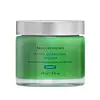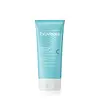What's inside
What's inside
 Key Ingredients
Key Ingredients

 Benefits
Benefits

 Concerns
Concerns

 Ingredients Side-by-side
Ingredients Side-by-side

Water
Skin ConditioningGlycerin
HumectantAlcohol Denat.
AntimicrobialDipropylene Glycol
HumectantDimethicone
EmollientButylene Glycol
HumectantPropylene Glycol
HumectantPEG-8
HumectantAmmonium Polyacryloyldimethyl Taurate
Emulsion StabilisingPhenoxyethanol
PreservativeCarbomer
Emulsion StabilisingDimethiconol
EmollientSodium Hyaluronate
HumectantOlea Europaea Leaf Extract
PerfumingPalmitoyl Olive Leaf Extract
AntioxidantSodium Hydroxide
BufferingTetrasodium EDTA
Sodium Citrate
BufferingParfum
MaskingAcetyl Dipeptide-1 Cetyl Ester
Skin ConditioningCucumis Sativus Fruit Extract
EmollientT-Butyl Alcohol
PerfumingSodium Benzoate
MaskingCitrus Grandis Extract
AntimicrobialHydrolyzed Grape Fruit Extract
HumectantToluene Sulfonic Acid
Benzyl Benzoate
AntimicrobialCellulose Acetate Butyrate
Benzyl Alcohol
PerfumingLinalool
PerfumingWater, Glycerin, Alcohol Denat., Dipropylene Glycol, Dimethicone, Butylene Glycol, Propylene Glycol, PEG-8, Ammonium Polyacryloyldimethyl Taurate, Phenoxyethanol, Carbomer, Dimethiconol, Sodium Hyaluronate, Olea Europaea Leaf Extract, Palmitoyl Olive Leaf Extract, Sodium Hydroxide, Tetrasodium EDTA, Sodium Citrate, Parfum, Acetyl Dipeptide-1 Cetyl Ester, Cucumis Sativus Fruit Extract, T-Butyl Alcohol, Sodium Benzoate, Citrus Grandis Extract, Hydrolyzed Grape Fruit Extract, Toluene Sulfonic Acid, Benzyl Benzoate, Cellulose Acetate Butyrate, Benzyl Alcohol, Linalool
Water
Skin ConditioningGlycolic Acid
BufferingButylene Glycol
HumectantGluconolactone
Skin ConditioningEthylhexyl Palmitate
EmollientCetearyl Alcohol
EmollientDimethicone
EmollientPEG-100 Stearate
Glyceryl Stearate
EmollientButyrospermum Parkii Butter
Skin ConditioningAmmonium Hydroxide
BufferingLactobionic Acid
BufferingMagnesium Aluminum Silicate
AbsorbentTocopheryl Acetate
AntioxidantArginine
MaskingCaprylyl Glycol
EmollientDisodium EDTA
Xanthan Gum
EmulsifyingPhenoxyethanol
PreservativeChlorphenesin
AntimicrobialParfum
MaskingCI 19140
Cosmetic ColorantCI 17200
Cosmetic ColorantWater, Glycolic Acid, Butylene Glycol, Gluconolactone, Ethylhexyl Palmitate, Cetearyl Alcohol, Dimethicone, PEG-100 Stearate, Glyceryl Stearate, Butyrospermum Parkii Butter, Ammonium Hydroxide, Lactobionic Acid, Magnesium Aluminum Silicate, Tocopheryl Acetate, Arginine, Caprylyl Glycol, Disodium EDTA, Xanthan Gum, Phenoxyethanol, Chlorphenesin, Parfum, CI 19140, CI 17200
Ingredients Explained
These ingredients are found in both products.
Ingredients higher up in an ingredient list are typically present in a larger amount.
Butylene Glycol (or BG) is used within cosmetic products for a few different reasons:
Overall, Butylene Glycol is a safe and well-rounded ingredient that works well with other ingredients.
Though this ingredient works well with most skin types, some people with sensitive skin may experience a reaction such as allergic rashes, closed comedones, or itchiness.
Learn more about Butylene GlycolDimethicone is a type of synthetic silicone created from natural materials such as quartz.
What it does:
Dimethicone comes in different viscosities:
Depending on the viscosity, dimethicone has different properties.
Ingredients lists don't always show which type is used, so we recommend reaching out to the brand if you have questions about the viscosity.
This ingredient is unlikely to cause irritation because it does not get absorbed into skin. However, people with silicone allergies should be careful about using this ingredient.
Note: Dimethicone may contribute to pilling. This is because it is not oil or water soluble, so pilling may occur when layered with products. When mixed with heavy oils in a formula, the outcome is also quite greasy.
Learn more about DimethiconeParfum is a catch-all term for an ingredient or more that is used to give a scent to products.
Also called "fragrance", this ingredient can be a blend of hundreds of chemicals or plant oils. This means every product with "fragrance" or "parfum" in the ingredients list is a different mixture.
For instance, Habanolide is a proprietary trade name for a specific aroma chemical. When used as a fragrance ingredient in cosmetics, most aroma chemicals fall under the broad labeling category of “FRAGRANCE” or “PARFUM” according to EU and US regulations.
The term 'parfum' or 'fragrance' is not regulated in many countries. In many cases, it is up to the brand to define this term.
For instance, many brands choose to label themselves as "fragrance-free" because they are not using synthetic fragrances. However, their products may still contain ingredients such as essential oils that are considered a fragrance by INCI standards.
One example is Calendula flower extract. Calendula is an essential oil that still imparts a scent or 'fragrance'.
Depending on the blend, the ingredients in the mixture can cause allergies and sensitivities on the skin. Some ingredients that are known EU allergens include linalool and citronellol.
Parfum can also be used to mask or cover an unpleasant scent.
The bottom line is: not all fragrances/parfum/ingredients are created equally. If you are worried about fragrances, we recommend taking a closer look at an ingredient. And of course, we always recommend speaking with a professional.
Learn more about ParfumPhenoxyethanol is a preservative that has germicide, antimicrobial, and aromatic properties. Studies show that phenoxyethanol can prevent microbial growth. By itself, it has a scent that is similar to that of a rose.
It's often used in formulations along with Caprylyl Glycol to preserve the shelf life of products.
Water. It's the most common cosmetic ingredient of all. You'll usually see it at the top of ingredient lists, meaning that it makes up the largest part of the product.
So why is it so popular? Water most often acts as a solvent - this means that it helps dissolve other ingredients into the formulation.
You'll also recognize water as that liquid we all need to stay alive. If you see this, drink a glass of water. Stay hydrated!
Learn more about Water